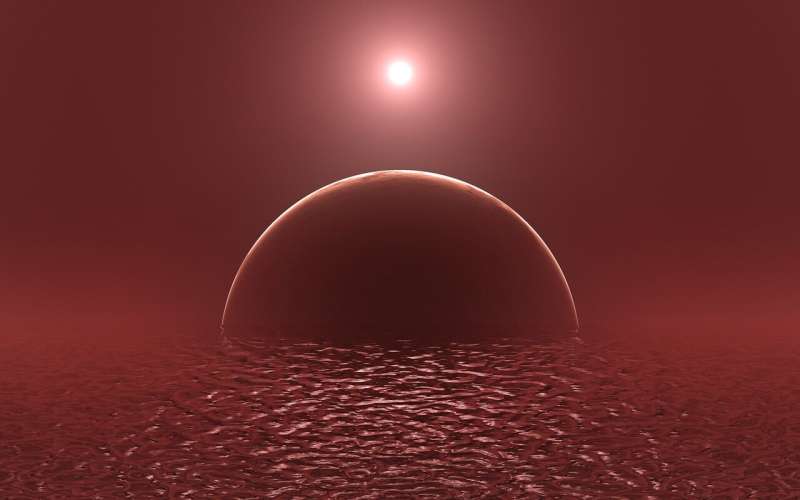May 6, 2019 report
Two studies cast doubt on existence of exomoon

Two teams working independently have looked at the possibility of an exomoon circling the exoplanet Kepler-1625b, which orbits the star Kepler-1625. They report little to no evidence supporting its existence. One team, led by Laura Kreidberg, has written a paper describing their work, which is posted on the arXiv preprint server. Another team led by René Heller published a paper in the journal Astronomy Astrophysics. The team that announced possible evidence of the exomoon last year, led by Alex Teachey, has written another paper in response to the findings by the new researchers that is available on arXiv.
Last October, Teachey and colleagues published a paper describing evidence they had found for the possible existence of an exomoon. They had noted dips of light from its star recorded by the Kepler space telescope that suggested a large body circling Kepler-1625b. They found the same sort of dip in Hubble data. Such dips are generally indicative of a planet or other object interfering with light from its star as it passes in front of it—in this case, Kepler-1625. They also noted that Kepler-1625b had what appeared to be an odd transit—it began earlier than it should have and the dip in brightness that resulted did not return to normal for a period longer than calculations suggested it should have, comprising more evidence of an exomoon.
The team led by Kreidberg analyzed the Hubble data using a different data-processing technique that has been used successfully for over seven years. They report no evidence of a dip other than that triggered by Kepler-1625b. The team led by Heller did observe a slight dip, but suggests it was not sufficient evidence of an exomoon. Both teams also saw the odd transit, but both suggest it could have been due to other phenomena, so attributing it to an exomoon was not warranted.
In their reply, Teachey and his team took another look at their earlier results and suggest they warrant further observations of Kepler-1625b for more evidence. They also addressed the findings of Kreidberg's team and noted that the technique used by the group could have resulted in some data being erased.
More information: Alex Teachey et al. Loose Ends for the Exomoon Candidate Host Kepler-1625b. arXiv:1904.11896 [astro-ph.EP] arxiv.org/abs/1904.11896
Laura Kreidberg et al. No Evidence for Lunar Transit in New Analysis of HST Observations of the Kepler-1625 System. arXiv:1904.10618 [astro-ph.EP]. arxiv.org/abs/1904.10618
René Heller et al. An alternative interpretation of the exomoon candidate signal in the combined Kepler and Hubble data of Kepler-1625, Astronomy & Astrophysics (2019). DOI: 10.1051/0004-6361/201834913
Journal information: Astronomy & Astrophysics
© 2019 Science X Network





















